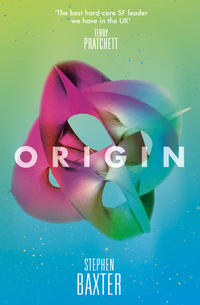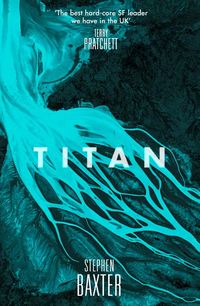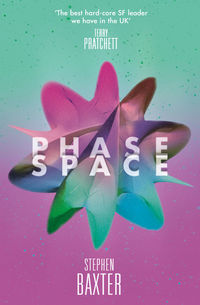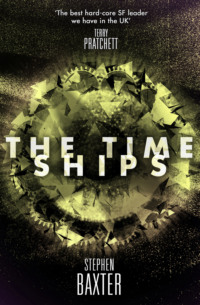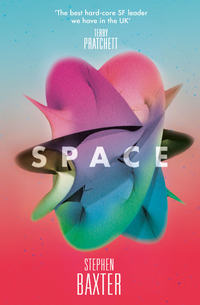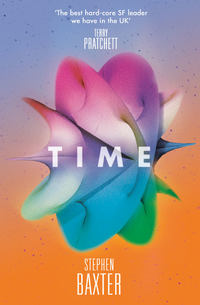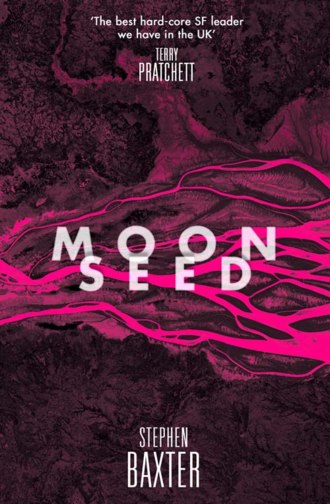
Полная версия
Moonseed
Castle Rock was another volcanic plug, smaller than Arthur’s Seat but of the same vintage, sprouting from the same underground magmatic complex. The Castle itself was a sandstone mound of buildings, walls and turrets and battlements, looking as if it had grown out of the basaltic crag on which it was built.
He walked around the grounds, inspecting the basalt that underpinned the Castle – in some cases, rocky outcrops had simply been incorporated into the walls – but to Henry’s relief there was no sign here of the contamination which had disfigured the Seat.
He climbed to the Upper Ward, and looked out from the cannon-platform terrace to the north. He could see the railway line and Princes Street, two great avenues stretching west to east, converging towards the odd structures on Calton Hill to the north-east. Between the rail line and Princes Street was the garden, that old drained loch. It was studded with trees, a little marred by a huge white marquee where – Henry had learned – a band played during the summer arts festival. Beyond that was the cluttered landscape of the New Town, with its sandstone monuments – the Scott Monument, his own Balmoral Hotel, the banks and insurance companies on George Street – jutting out of the forest of roofs, and beyond that, serene and calm, was the blue surface of the Firth of Forth, and the rocky northern coast.
The lights were coming on, and in Princes Street the crowds were starting to bustle out of the shops and offices and making their way home, their radiation-proofed smocks and ponchos bright, bustling human activity at the heart of the ancient city.
He felt as if he was somehow opening up, as if walls in his head were crumbling. He wasn’t used to feeling so engaged with humanity as this.
Maybe it was something to do with Jane.
This was Lilliput, small and crowded: a thousand years old, and beautiful. It seemed impossible that it should be under threat – a threat only he perceived.
Venus. The Moon rock anomalies. The Arthur’s Seat dust.
The pieces of the puzzle seemed to be moving around in his head, colliding, trying to find ways to fit. But the essence of the future was clear to him; the inexorable growth of that stuff on Arthur’s Seat would see to that.
Bad news.
Unless he, and those who worked with him, found a way to stop it.
‘We have to, is all,’ he said to himself. ‘If not us, who else?’
For a while longer he gazed out over Edinburgh’s bustle.
Then he began the walk back to the town, to meet Blue.
Henry had a little trouble meeting up with Blue Ishiguro, in the subterranean clamour of Waverley Station. Blue wasn’t much over five five and was skinny as a rake, so it was hard to spot him among all these heavy-set, overfed gaijin, as Henry always thought of Westerners when he was around Japanese.
But here Blue came at last, his pencil-thin frame all but overwhelmed by the giant, battered field rucksack he carried on his back, his button-small face split by a giant shit-eating grin.
Henry embraced Blue, and they went into a mock-boxing routine, what Blue, who had spent maybe too long in America, always called hoopin’ and hollerin’ mode.
Blue said, ‘It’s good to see you, man.’
‘That’s the truth. Let’s get out of here.’
They emerged into the centre of the city. Blue hitched his pack on his back and looked around curiously. They set off west down Princes Street, which ran straight as an arrow towards the spires of St Mary’s Cathedral, to find the guest house Blue had booked for himself.
It was a little after eight in the evening, so the end-of-day crowd had subsided from its peak, and the light was starting to go. All the monuments of the city seemed to be bathed in yellow-gold floodlights: the Castle on its shapeless volcanic mound, the Balmoral Hotel, and the memorial for Walter Scott which looked, Henry thought, like a Saturn V launch gantry rendered in sandstone, turned black as coal by pollution, which the monument was too fragile to have washed off.
‘So,’ said Henry. ‘What do you think?’
Blue gazed around, his rheumy eyes analytical. ‘Skinny,’ he said. ‘England has a lot of skinny buildings.’
‘It may do. But this is Scotland.’
‘Whatever. And it’s kind of grubby from the pollution.’
‘True enough.’
‘So where’s the volcano?’
Henry clapped him on the shoulder. ‘Tomorrow, old man. You need to sleep off your jet lag.’
Blue sighed. ‘I suppose you are right.’
They arrived in a small, straight side-street in the west of the city, not far from the shadow of St Mary’s. The guest house was a rambling, much-extended building next to a cobbled courtyard, entered by a narrow archway. The ground floor was pretty much a pub, a long bar gleaming with glass and leather, circular brass tables crowded with drinkers cradling pints in straight glasses; cigarette smoke hung like a volcanic pall in the air.
Blue grinned at Henry. ‘I think I will like it here.’
He didn’t object when Henry picked up his rucksack to carry it up the two flights of stairs to his room (no elevator, of course). The room, when they got to it, was just a box, not much bigger than a bed and a shower stall.
Back in the bar, which was still more crowded than before, Blue insisted on buying the drinks. They sat at a table in the corner, sticky with stale beer, and Blue waited patiently, until Henry had to explain that in a British pub you had to go up to the bar and order your drinks and bring them back. On the other hand, in cafés and restaurants you were supposed to wait for service … and so forth. Blue accepted all this serenely, went to the bar, and came back with two glasses full to the brim with heavy Scottish bitter.
‘Here’s to you,’ Henry said.
‘Kampai!’
The beer was heavy, flat and warm; Henry was working at getting used to the stuff, but he had a ways to go yet.
‘Your room’s kind of small,’ he said.
Blue laughed. ‘So small that if I cussed a cat I’d get hair in my mouth. It’s fine, my friend. I have my tatami mat and my happy coat and my portable family shrine, though I’m not sure where I will place it. The shower stall, perhaps. I think this place has a certain charm. Did you know it used to be a coaching inn? And you can see how old it is, so old it has had time to subside. Think about that, Henry. This place is probably older than all but two or three buildings on your whole continent.’
‘But not Japan.’
‘Not Japan, no.’
‘Well, these old Brit places are better than they used to be, I guess. At least you get a shower in your room now. But –’
‘But you can’t polish a turd.’
Henry grinned. ‘I’m glad to have you here, my friend.’
Blue eyed Henry. ‘I take it you don’t want to talk about work.’
‘Not until tomorrow. I need you refreshed. I need your clear thinking.’
‘There are no live volcanoes in Scotland,’ Blue pointed out. ‘Not for three hundred million years.’
‘I know. And I don’t think we have one now. What we have is –’
‘What?’
‘Something not right.’
‘It scares you.’
‘Yes, it does,’ Henry said.
Blue grunted and raised his glass. ‘But that is for tomorrow. For tonight, we will do what old men like us always do, which is to talk about old times. Tell me, do you still hear from the Pinatubo team?’
Pinatubo was a volcano in the Philippines. Henry and Blue had been part of a joint team of USGS and Philippine volcanologists who had gone out to assess the danger of eruption. Because of the accuracy of their characterization of the hazards and their prediction of eruption, more than fifty thousand people had been evacuated to safety, days before Pinatubo’s devastating eruptions.
Henry, fresh from college, had done little more than carry the gear, but it had been his first exposure to real field work, and to a major geological event. And to what it could do to people.
So they gassed about that.
‘Not that we were so smart about Pinatubo,’ Henry said. ‘You remember Sister Assumpta?’
Blue laughed. ‘Of course.’ This was the nun who had walked into the Philippine Institute of Volcanology to tell the assembled scientists, peering at their instruments in the artificial light there, that, begging their pardon, the mountain had just exploded. And so it had, clearly visible from her village; but that nun’s soft-spoken message was the first warning anybody had.
So they talked about that for a while. Then Henry went up to buy some more drinks, and they talked about the time in Colombia when Blue had absent-mindedly walked over terrain so hot that when he took off his boots his socks were smoking … and so on.
Blue kept up, but he looked thin and frail compared to the booming, bovine gaijin around him, and every now and again he would turn away and cough deeply into a huge handkerchief, the phlegm liquid in his throat. He had visibly crumbled in the few years since Henry had seen him last, and that was a true pisser.
Blue wasn’t admitting to any of it, but the word was he had asthma, and maybe heart trouble. Which was why VDAP hadn’t allowed him out of Vancouver and into the field for a couple of years, and – no doubt – why Blue had been so keen to come for a jaunt to Britain, on Henry’s obscure and ambiguous invitation.
Blue was driven to keep working. Everyone who knew him knew that, and knew why. Kobe.
But that wasn’t Blue’s fault. Why the hell should he have to give up, to retire, to succumb to the betrayal of his body?
Henry felt a deep, unfocused anger boiling up inside him. Age. It was so damn medieval that they all had to submit to such a thing. He himself was already old enough to feel the weight of age descending on his own bones. It just went on and on, it seemed, wearing you down, taking out everybody from the best and brightest on down. And nobody got a reprieve, not so much as a day off from it.
He thought of the patch on Arthur’s Seat, spreading like the liver spots on the thin skin of Blue’s bird-boned hand. Was that what it was? – a sign that even the Earth, in the end, grew old?
You’ve drunk too much of this British piss, he thought. The next time he went to the bar he came back with Becks, which was the nearest they had to a clean American beer.
12
He arranged to meet Blue up on the Seat the next afternoon.
In the morning, with a mildly banging head, he made his way to the lab.
He made a run around the building, checking on the progress of his samples in the various labs. Here was the X-ray fluorescence spectrometer, for instance, an anonymous grey box which looked like an industrial-strength photocopier, into which ground-up fragments of his rocks were fed in tiny platinum egg cups. X-ray fluorescence would tell him about elemental abundances in fine detail.
He was promised by the prep technician that his samples would be in place by the end of the day.
The ion microprobe was the department’s million-pound pride and joy. It was set up in a gloomy lab crammed with humming electronic equipment. The heart of the probe was a chest-high complex of stainless steel tubing and chambers. Rock samples, coated in gold plate, were fed into a vacuum chamber and bombarded with fine beams of caesium or oxygen ions, focused by intense electromagnets. There was a little optical microscope you could use to watch the ion beam cutting its little crater into the surface of the sample, like a kid with a magnifying glass scorching his initials on the barn door. But the sample areas were just microns across, only a couple of atoms deep. The layers of atoms, sputtered off into a mass spectrometer, revealed the elemental composition of the sample, and such details as the temperature the crystal structures formed at.
It was an impressive piece of equipment – one of just four in geology labs around the world – or at least it seemed so until you realized that Motorola alone had four of the beasts, for use in their silicon chip quality control procedures. The academic community was undoubtedly the poor relation of business and government, and in Britain things seemed to be even worse than in the States.
Henry’s work, it seemed, was next in the queue behind a meteorite analysis that was overrunning, after an all-night run. He argued, but got nowhere, and left fuming.
Anyhow, he suspected the composition of the samples wasn’t nearly so important, in this case, as their structure. And that was going to be difficult to study here, without the right tools.
When he got to the clean room Mike was there, bright-eyed and depressingly keen, eager to go over the results of X-ray diffraction analyses he had run on samples taken from 86047. The results were simple traces, peaks and troughs. Mike had run the images through the computer already, and was compiling the results when Henry arrived.
But Mike looked flustered, and he was rushing to be ready; Henry had a sinking feeling he had been up all night with this.
At Henry’s request, he had also run through some of the bizarre grains Henry had scooped up from the Arthur’s Seat dust pool, or whatever the hell it was.
X-ray diffraction was a step beyond the use of polarized light. The wavelength of visible light was much bigger than atomic size. X-rays had a wavelength just about the size of a typical atom, so they could show atomic structure: the crystal structure of silicates, for instance. The spacing of the peaks and troughs on Mike’s results showed the crystallographic spacing of the sample. The trick was to map back from these simple patterns to figure what the underlying crystal structure must be.
It was complex. But diffraction results were unambiguous. And every so often you would run into a new crystal form.
And that, Henry realized with an odd stir of anticipation and dread, was what seemed to have happened here.
And not just with the Moon rock, which you might expect with such an exotic sample. There was, Mike said, something different about the Edinburgh sample, too.
They looked at the 86047 results first. Mike had prepared a summary diagram on a pc screen.
Inside the Moon rock’s potato-shaped profile, roughly sketched with graphic software, Mike had marked layers, as if the rock was a misshapen onion.
‘I took samples from all the way through the rock,’ Mike said. ‘You can see it has this structure –’
‘Structure? What are you talking about? It’s a rock sample. It ought to be a homogenized lump –’
‘Nevertheless,’ Mike said. He sounded nervous, maybe pissed off, and Henry made a conscious decision to back off. Mike said, ‘This is predominantly olivine.’ He pointed to a band marked in red, just inside a grey band that made up the surface of the rock. ‘Then, going inward, we have, in order, layers of tourmaline, a pyroxene mix, amphiboles, mica, quartz.’ That took his finger to the core of the rock, which he’d left as white.
‘So what’s in there? And what’s in the outside layer?’
‘I can’t say.’
‘You can’t say?’
‘Not from the diffraction results. But I know they are silicate forms. I did some chemical analysis to prove that. I can show you the results from the earlier optical emission and X-ray fluorescence tests which –’
‘Later. I believe you.’
‘The stuff at the centre seems to be hard and dense. Rigid.’
‘Some kind of super-quartz, maybe?’
‘Maybe. Some very complex structure, anyhow.’ Mike hesitated, watching him. ‘Some of us are speculating it might fold up all the way into the fourth dimension. Ha-ha.’
That didn’t make Henry feel like laughing.
He tried to keep the frustration out of his voice. ‘Well, we still don’t know what we’ve got here. We need to order more of these runs. Bump up the priority. I’m getting tired of queuing behind asshole grad students.’
Mike made a note. ‘I’ll call Marge Case.’
‘Don’t let her give you any shit. And, Christ, this just isn’t fine enough. We need some scanning tunnelling microscope time.’
Mike sighed. ‘Well, we don’t have an STM. As you know.’
‘All right. What about the surface stuff?’
‘It’s a dust,’ said Mike. ‘Very fine. Almost no cohesion or adhesion. If you disturb the sample at all, layers of it just fall off.’
Henry frowned. ‘That makes no sense. That damn rock was picked up by some galoot on the Moon, and then dropped from two hundred and fifty thousand miles into the Indian Ocean. That’s what I call disturbance. Anything loose should have been shaken off long ago.’
‘I know,’ Mike said. ‘I’m just telling you what I found.’
Henry pulled at his lip.
New forms of silicates?
It wasn’t impossible. There were lots of ways to make crystal structures out of the silicon anion, the fundamental silicon-oxygen tetrahedral building block.
But 86047 was just a rock, a fragment of some larger body that broke off an aeon or two ago. Why should it have this neat internal structure?
It was, he mused absently, as if something was living in there. Working, burrowing deeper into the rock, chewing up the olivine and leaving behind these deeper, complex layers …
‘Mike, I want you to repeat these tests. Keep on with the other stuff, the more detailed work, but go over this again. Every couple of days. See if there’s any change.’
‘Change?’ Mike frowned. ‘In a piece of rock billions of years old? How can there be any change? What kind of change?’
‘If I knew, I wouldn’t need you to run the tests.’
Mike made another note.
Very fine dust. Almost no cohesion or adhesion …
‘What about the Arthur’s Seat samples?’
Mike had passed that work to another researcher. It took him a couple of minutes to retrieve the diffraction results from the intranet.
The diffraction pattern was unidentifiable. A silicate form nobody had seen before.
Nevertheless, to Henry, it looked familiar.
He had Mike call up the 86047 results again, and overlaid the two.
They were the same.
The diffraction results, of this sample of pulverized basalt from Edinburgh, and of the ancient Moon rock, were all but identical.
‘Now,’ Henry said, ‘what the hell do we have here? What is the connection between this battered old piece of the Moon, and an innocent Edinburgh landscape?’
But Mike turned away, oddly reluctant to respond.
Mysteries on mysteries, Henry thought, puzzled by Mike’s reaction.
When he went up to the Seat, he found Blue and Jane waiting for him.
‘I see you found each other.’
Blue was grinning so wide his teeth were twinkling. ‘I see you found each other,’ he said.
‘Knock it off.’
Jane said, ‘I was over with the cultists –’
Blue giggled. ‘She saw me sniffing the rocks.’
‘So I knew he had to be something to do with you.’
‘I’m glad you two are getting along,’ Henry said drily.
‘I’ve been telling her all about your past,’ said Blue.
‘Oh, shit.’
‘Yeah,’ Jane said. ‘Blue tells me his hotel is okay, but they are – what did you say?’
‘Skinning me like a country chicken.’ Blue cackled.
She said drily, ‘So which part of Arkansas are you from?’
‘Come on, Blue,’ Henry said. ‘We’re here to work.’
Blue nodded. ‘We need to get closer. The young lady –’ he nodded at Constable Decker ‘– will allow us through the tape.’
‘She will?’
‘I vouched for you,’ said Blue.
They lifted the tape and ducked underneath it. Cautiously, they approached the edge of the summit dust pool – which, once more, had spread since Henry last looked. It sprawled, ragged, over the lumpy rock.
Blue threw lumps of turf into the pool – they disappeared immediately, without so much as a ripple – and he kneeled down, a little stiffly, to sniff the air.
Blue said, ‘It might be liquefaction.’
Jane said, ‘What’s liquefaction, exactly?’
Henry said, ‘Where earth tremors shake up certain kinds of soils. Seismic shear waves passing through a saturated granular soil layer distort its structure, and that causes some of the void spaces to collapse –’
‘In English.’
‘For a while, the soil acts like a liquid.’
‘But,’ Blue said, ‘liquefaction is only found when the sands and silts were deposited recently.’
Jane said, ‘Recently?’
Henry shrugged. ‘Say, less than ten thousand years ago.’
‘Even then,’ Blue said, ‘you need ground water within thirty yards of the surface … This is an ancient volcanic plug. I can’t believe this is liquefaction, as we understand it.’
‘Then what?’
He spread his frail hands. ‘I’ve never seen anything like it.’
‘Congratulate me,’ said Henry. ‘A new geological breakthrough.’
Blue drawled, ‘Even a blind pig finds an acorn sometimes.’
But the banter was, Henry thought, on auto-pilot. Blue seemed to share some of his own sense of dread, as he stood here and studied this unclassifiable phenomenon.
‘So,’ Jane said, ‘what are you going to do now?’
‘I think we should bring the portable lab out here,’ Blue said.
‘What portable lab?’
Henry said, ‘He means the VDAP’s. That’s the Volcanic Disaster Assistance Program. A kind of volcano SWAT team run by the US Geological Survey. They have a portable lab for studying geological disturbances which –’
‘Oh, sure,’ she said. ‘Why don’t you get your ex-wife to beam it down from the Space Shuttle?’
‘Jane –’
‘This isn’t the Third World, you know. Even if it was, you would still be a patronizing arsehole American.’
Henry eyed Blue. ‘Of course she’s right. Everything we need should be here.’
‘Okay,’ Blue said. ‘So we wire the mountain. We need seismometers. A network of them, at the rim, on high-gain rock sites. They will have to be moved regularly as the pool progresses, I suppose … We’ll need volunteers for that. The seismos will be linked by radio telemetry to a central point.’
‘We’ll use my lab,’ Henry said. ‘We’ll need a war room.’
‘Why a network of seismometers?’ Jane asked. ‘Why not just one or two?’
‘Because we have to triangulate,’ Blue said with gracious patience. ‘We must locate the movements of the ground in three dimensions.’
Henry said, ‘What else?’
‘We should do some real-time and spectral seismic analysis, to understand the growth of this phenomenon.’
‘Deformation monitors?’ To Jane he explained, ‘When magma builds up beneath a volcano the ground distorts.’
‘Yes,’ Blue said. ‘Whatever you can find. Ideally laser based EDMs –’
‘Electronic distance meters,’ Henry told Jane.
‘And GPS receivers.’
‘Global –’
‘Positioning System?’ she said with some satisfaction.
‘A cospec for gas emissions,’ Blue said.
‘Yeah.’
‘Henry, I’d really like BOB here.’
Jane said, ‘Who’s BOB?’
Henry smiled. ‘A VDAP computer program. For rapid analysis of time-series data in crisis situations. Okay. And I’d like to order up regular aerial surveys to map the changing extent of the thing. My shoe-leather metrics really aren’t good enough. Later we should think about acoustic flow monitors if there are lahars, microbarographs –’
Jane said, ‘That sounds like it detects changes in atmospheric pressure.’
‘So it does.’
‘Why that?’
‘Because it’s a good predictor of a volcanic explosion.’
‘… Oh.’ She was looking at the pool rim. ‘Look at this,’ she said. She pointed to a patch at the rim of the pool, where bare rock showed through the grass.


